Well protected from disaster: incident prevention for natural gas pipelines
The Swiss natural gas pipeline network is around 2300 kilometers long and supplies households and businesses with energy. Serious accidents involving gas explosions are extremely rare. To ensure that this remains the case in the future, the network is currently being put through its paces.
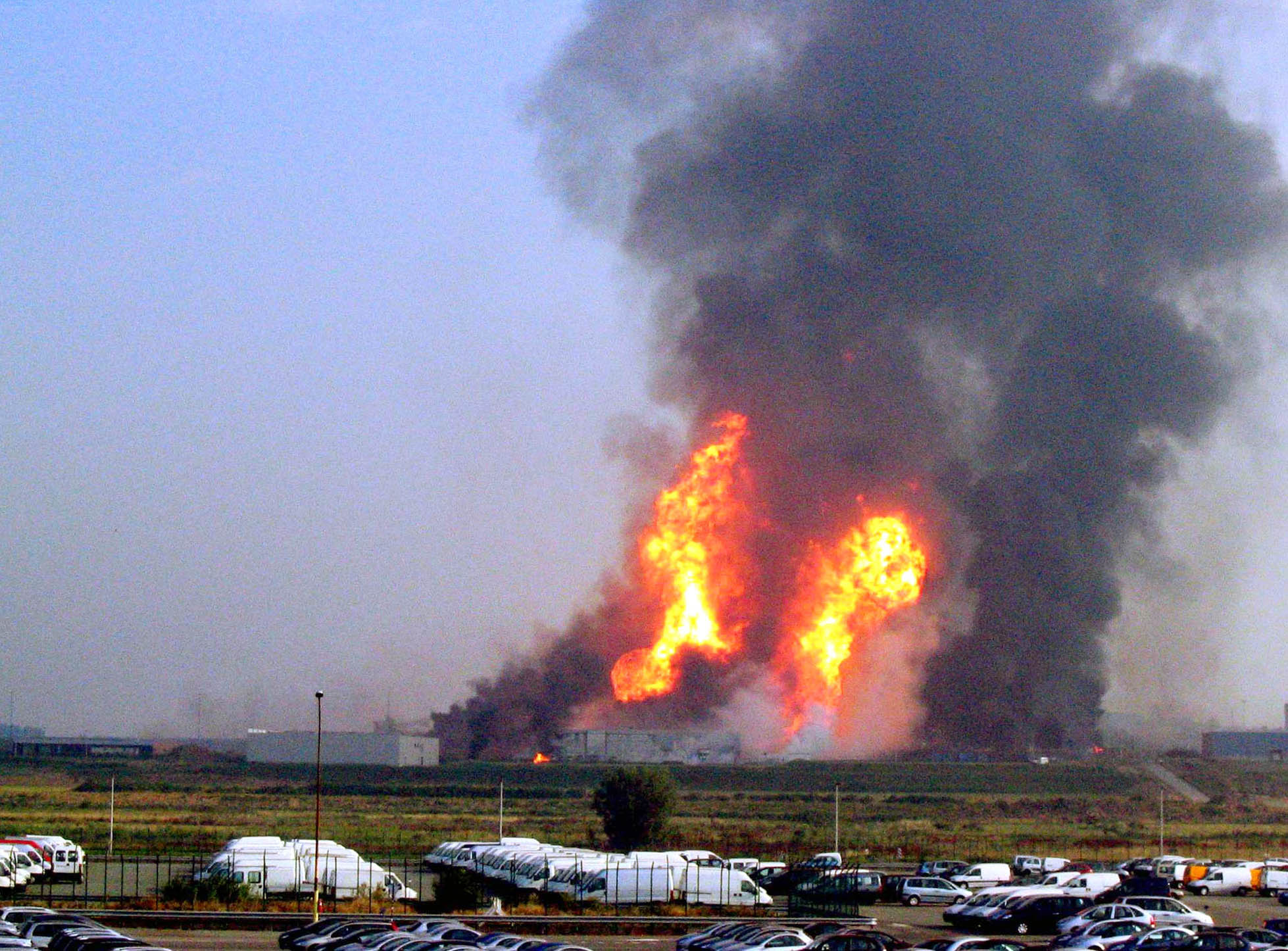
Explosion at a gas plant in Ghislenghien, Belgium (keystone: AP Photo/Olivier Pirard)
They destroyed three factory buildings, knocked a crater about 4 meters deep and 10 meters wide into the earth, and shredded a gas pipeline over a length of just over 200 meters. The flames reached up to 100 meters into the sky and could still be seen from a distance of 15 kilometers. The disaster, which occurred on July 30, 2004, in Ghislenghien, Belgium, killed 24 people and injured more than 132, some of them seriously.
Should we be worried?
This tragic accident occurred during the construction of a new factory building because a bulldozer accidentally damaged a natural gas pipeline running underground through the area. Fortunately, there have been no such devastating accidents involving high-pressure natural gas pipelines in Switzerland in the past. The only incident occurred in Reigoldswil (BL) in 2014: a pipeline ruptured in the course of a landslide, causing gas to escape, which was clearly audible as a loud hiss. Fortunately, the natural gas did not ignite and no one was injured.
Nevertheless, the question arises: How great is the risk of an accident with high-pressure natural gas pipelines in Switzerland? Should we be worried? The short answer is: No, but ..
Natural gas is a relatively young energy source in this country. It has only been used on a larger scale since the 1970s. It accounts for just under 15 percent of total energy consumption. As with crude oil, Switzerland is completely dependent on imports of natural gas. It is transported from the foreign high-pressure network to the operators of high-pressure natural gas pipelines throughout the country from various import points in western, northwestern, eastern and southern Switzerland. The pipelines have diameters of 10 to 120 centimeters and a pressure of up to a maximum of 85 bar. Today, Switzerland has a high-pressure natural gas pipeline network of around 2,300 kilometers, which supplies households for heating and cooking. In addition, industry and commerce also use natural gas as an energy source.
Conflicts are increasing
The existing pipelines meet all the technical requirements for a safe system as stipulated by the Pipelines Act. "From a technical point of view, the Swiss high-pressure natural gas pipeline network is safe," says Michael Hösli of the FOEN's Incident and Earthquake Prevention Section.
The question now, however, is to what extent the steady increase in the population, which has also been observed in the vicinity of high-pressure natural gas pipelines, increases the risks. 40 years ago, Switzerland still had a more compact settlement structure. For this reason, the natural gas industry was able to lay most of its high-pressure pipelines at a safe distance from villages and commercial areas. Today, with the increasing expansion of settlements and the desired densification of city centers, pipelines sometimes run in close proximity to settlements or businesses with large numbers of people. This means that conflicts between gas supply and other uses are becoming more frequent.
For this reason, in 2013 the federal government also made high-pressure natural gas pipelines subject to the Major Accidents Ordinance, which came into force in 1991, after chemical plants and the transport of hazardous goods by rail and road. The authorities have subsequently subjected the pipeline network to a continuous monitoring and assessment process, as is the case for all other facilities within the scope of the Major Accidents Ordinance. The oil pipelines with a total length of 200 kilometers, which pose a particular risk to the environment, were also scrutinized.
In particular, the following questions were addressed: What is the probability of a damaging event? How serious would the damage be? Are deaths and injuries to be feared? This makes it possible to assess the risks posed by high-pressure natural gas pipelines. It is also important to look into the future. This means that a risk assessment is also necessary if new zoning or construction is to be carried out on terrain near a natural gas pipeline. If the risks are too high, safety measures on the high-pressure natural gas pipeline or spatial planning measures to reduce the risk may be necessary.
"Risks in the green zone"

Anja Maurer is responsible for pipeline supervision at the Swiss Federal Office of Energy. (Image: SFOE)
So now, since 2013, natural gas pipeline operators have been working with specialized firms to prepare risk assessments for their networks. The review of this work was carried out by the Swiss Federal Office of Energy (SFOE) with the involvement of the FOEN and the Federal Pipeline Inspectorate. An initial assessment is positive: "For a very large proportion of the pipelines, the risks are in the green and therefore acceptable range," says Anja Maurer, who is responsible for pipeline supervision at the SFOE. However, there are increased risks at some points in urban areas, which are now being examined in greater depth. The results are expected by mid-2022.
Only in very rare cases would operators have to relocate pipelines to protect the population, says Anja Maurer. "The most common safety measure is to install protective plates made of concrete or plastic. These protect the pipeline from damage during construction work, which is by far the most common cause of damage incidents." As was the case at Ghislenghien. There should never be such an accident in Switzerland.
Risk assessment in a prime location
It was the last available plot with a view of the lake in the canton of Geneva. Exclusive location. The Champ-du-Château area in the Geneva suburb of Bellevue measures around 53,000 square meters, which is roughly the size of seven soccer fields. The rezoning as a building area in 2013 required the development of a neighborhood plan with new conditions of use. Since then, a development with apartments, office buildings and the new headquarters of the private bank Lombard Odier, designed by the renowned Basel architects Herzog & de Meuron, has been built on the site. Due to this structural densification, the new land-use plan also had to be reconciled with the Ordinance on Major Accidents. This is because a natural gas pipeline runs along the edge of the site, in the immediate vicinity of the private bank's new headquarters. From 2023, around 2,000 employees are expected to come and go there alone.
Gaznat, the operator of the natural gas pipeline, therefore commissioned a risk assessment from specialized companies. In cooperation with the cantonal authorities and the federal authorities, appropriate measures were derived and decided upon. In concrete terms, the natural gas pipeline had to be laid 3 meters deeper and is now 4 meters below the surface. The steel pipe is now twice as thick, at 10 millimeters instead of the previous 5 millimeters, and concrete protective plates have also been placed in the ground above the pipeline. In addition, fiber optic cables have recently been running through the ground above the pipeline, which Gaznat will be able to use in the future to measure the finest vibrations. They are used to detect and prevent unauthorized civil engineering work that could damage the pipeline at an early stage. "The combination of these measures reduces potential risks for the population to an acceptable level," says Fabrice Volluz, project manager at the operating company Gaznat.
Work on the pipeline began with draining the gas in the original pipeline section and isolating the route by installing caps. After implementation of the construction measures, specialists subjected the new pipeline section to a two-hour water pressure test and then connected it to the gas network. During the construction work, which is now underway, a Gaznat employee visits the site weekly to monitor the pipeline's surroundings and identify any potential risks.
Cooperation with all the authorities involved has been excellent, says Gaznat's Fabrice Volluz. Based on the polluter-pays principle stipulated in the Environmental Protection Act, the operating company had to bear the full cost of the adaptation work on the high-pressure natural gas pipeline.
Text: Peter Bader
The article first appeared in"das magazin" of the Federal Office for the Environment and is reprinted on energeiaplus.com as a secondary publication.
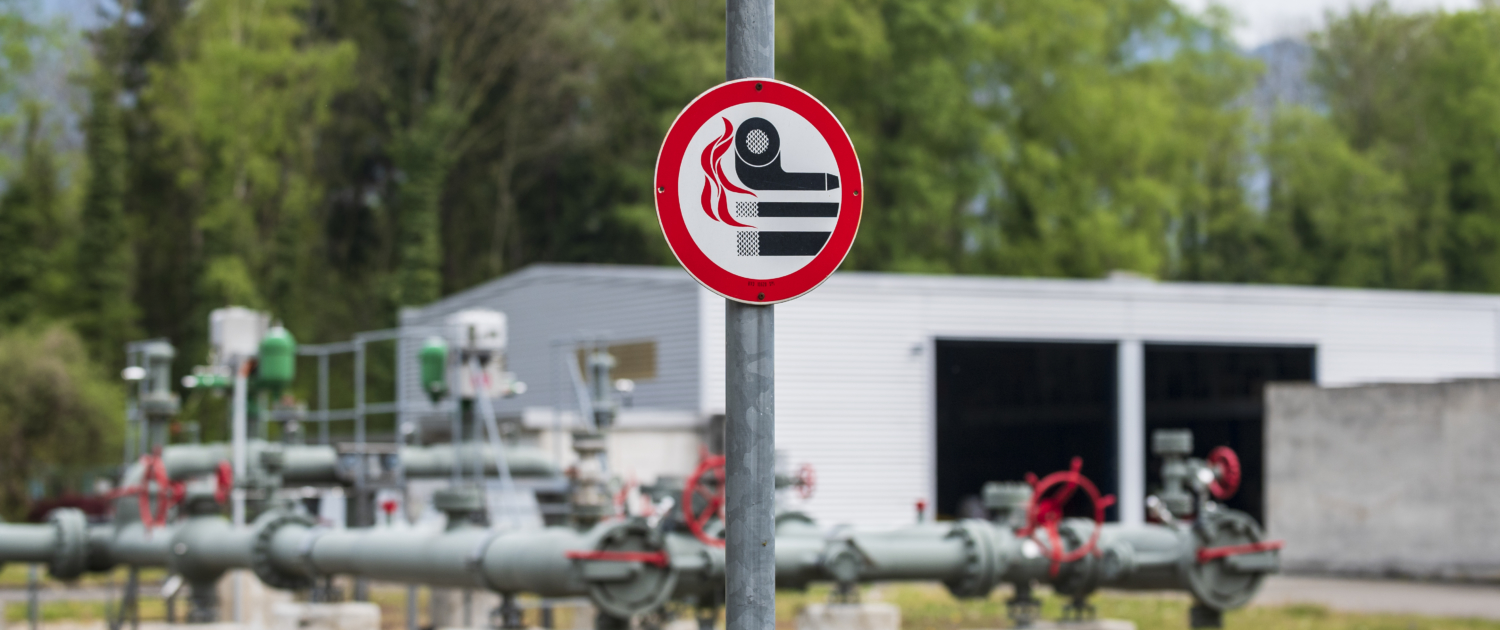 Flurin Bertschinger / Ex Press /BAFU
Flurin Bertschinger / Ex Press /BAFU
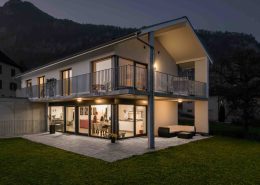 Stromflüssen auf der Spur
Stromflüssen auf der Spur 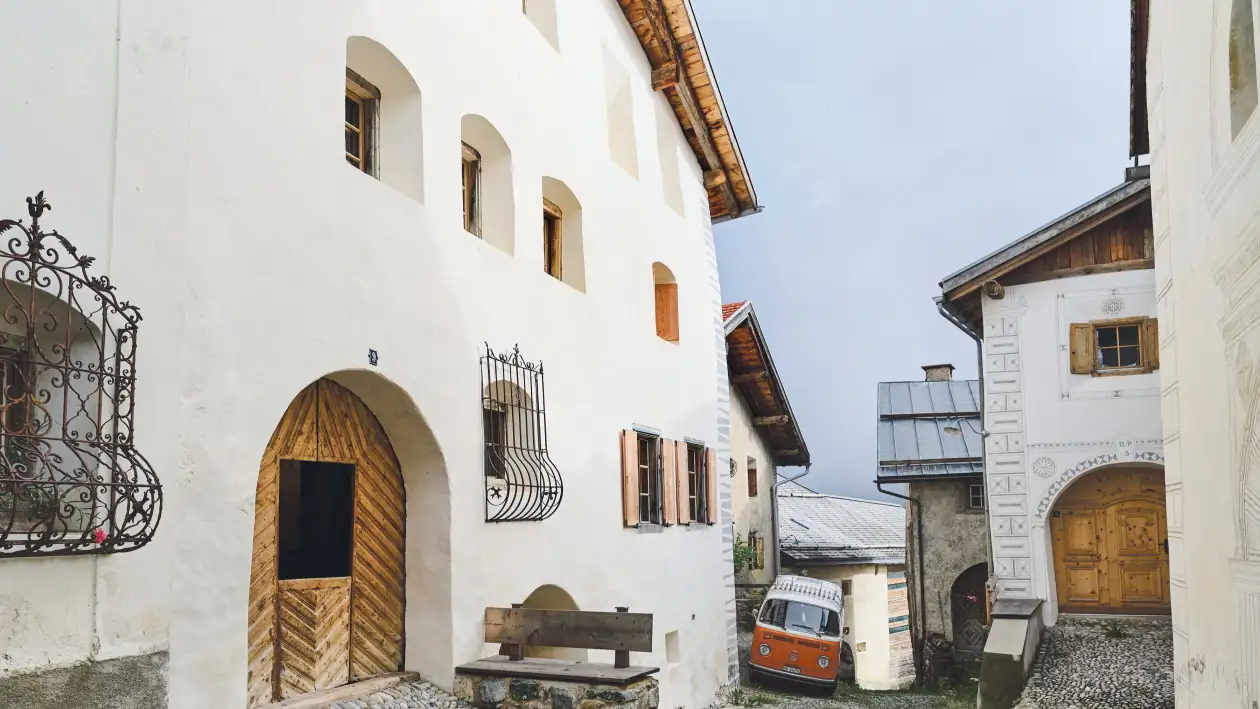 SuisseEnergieDes bâtiments historiques à la pointe de l’innovation
SuisseEnergieDes bâtiments historiques à la pointe de l’innovation 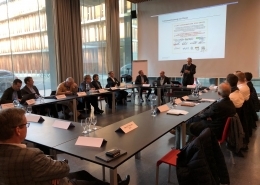 BFEEnergylight: Diminuer la consommation de l’éclairage de moitié
BFEEnergylight: Diminuer la consommation de l’éclairage de moitié 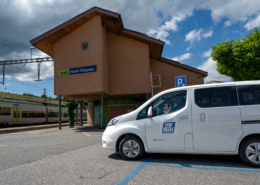 mybuxiWo der öV fehlt, springen on-Demand-Fahrdienste ein
mybuxiWo der öV fehlt, springen on-Demand-Fahrdienste ein 
 BFE - Brigitte Mader
BFE - Brigitte Mader Astrid Björnsen
Astrid Björnsen
Dein Kommentar
An Diskussion beteiligen?Hinterlassen Sie uns Ihren Kommentar!